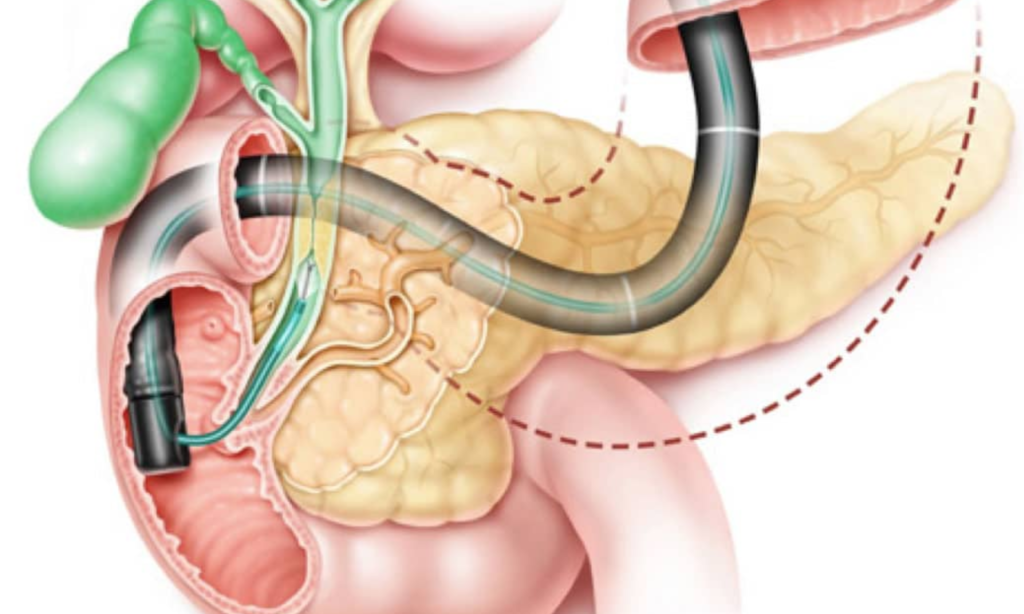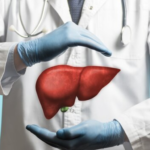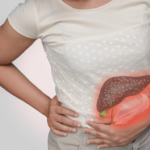
Endoscopic Retrograde Cholangiopancreatography, or ERCP, is a specialized procedure used to diagnose and treat conditions affecting the pancreas, bile ducts, and gallbladder. It combines endoscopy and fluoroscopy to examine these organs and perform therapeutic interventions when necessary.
Understanding ERCP Procedure
ERCP is typically performed by a gastroenterologist in a hospital setting. The procedure begins with the insertion of an endoscope—a thin, flexible tube with a light and camera—through the mouth. The endoscope is advanced through the esophagus, stomach, and into the duodenum, which is the first part of the small intestine. Once in the duodenum, the endoscope is used to locate the opening of the bile ducts and pancreatic duct.
Uses of ERCP
Diagnostic Purposes:
- Pancreatitis Investigation: ERCP helps diagnose the cause of pancreatitis, such as gallstones, tumors, or structural abnormalities in the pancreatic ducts.
- Biliary Strictures: It is used to identify and evaluate strictures or narrowing in the bile ducts, which can obstruct the flow of bile.
Therapeutic Applications:
- Stone Removal: ERCP allows for the removal of gallstones or pancreatic stones that may be obstructing the ducts and causing symptoms.
- Stent Placement: It enables the placement of stents to open blocked ducts and improve drainage of bile or pancreatic fluid.
- Biopsy: Tissue samples can be obtained for biopsy during ERCP to further investigate abnormalities detected during the procedure.
Who Needs ERCP?
ERCP is recommended for patients with:
- Recurrent episodes of pancreatitis where the cause is unclear.
- Suspected or known bile duct obstruction, which can lead to jaundice (yellowing of the skin and eyes) and other complications.
- Suspected tumors or structural abnormalities in the pancreas or bile ducts.
Risks and Considerations
While ERCP is widely considered safe, there are potential risks involved, such as:
- Pancreatitis: This is the most common complication, occurring in a small percentage of cases.
- Bleeding: Minimal bleeding can occur at the site of biopsy or stone removal.
- Infection: Though rare, infections can develop following the procedure.
- Perforation: There is a slight risk of perforation (tear) in the gastrointestinal tract, which may require surgical intervention to repair.
Recovery and Aftercare
After ERCP, patients are monitored closely for a few hours to watch for any immediate complications, such as pancreatitis or bleeding. Most patients can resume a normal diet and activities within a day or two, although strenuous activities should be avoided for a short period as advised by the gastroenterologist.
Conclusion
ERCP is a valuable diagnostic and therapeutic tool for managing disorders of the pancreas, bile ducts, and gallbladder. It provides detailed imaging and the ability to perform interventions that can alleviate symptoms and improve patient outcomes. If you or someone you know is experiencing symptoms suggestive of pancreatic or bile duct disorders, consulting with a gastroenterologist specializing in ERCP is essential.
Summary
ERCP is an essential procedure for diagnosing and treating conditions affecting the pancreas and bile ducts. For expert care in Pune, visit Dr. Bhate at the Best Gastro Liver Clinic in Pune, located in Baner. ERCP offers both diagnostic clarity and therapeutic interventions, ensuring patients receive comprehensive care tailored to their needs. Dr. Prasad Bhate expertise and the advanced facilities at the clinic make it a preferred choice for managing complex gastrointestinal issues effectively.




